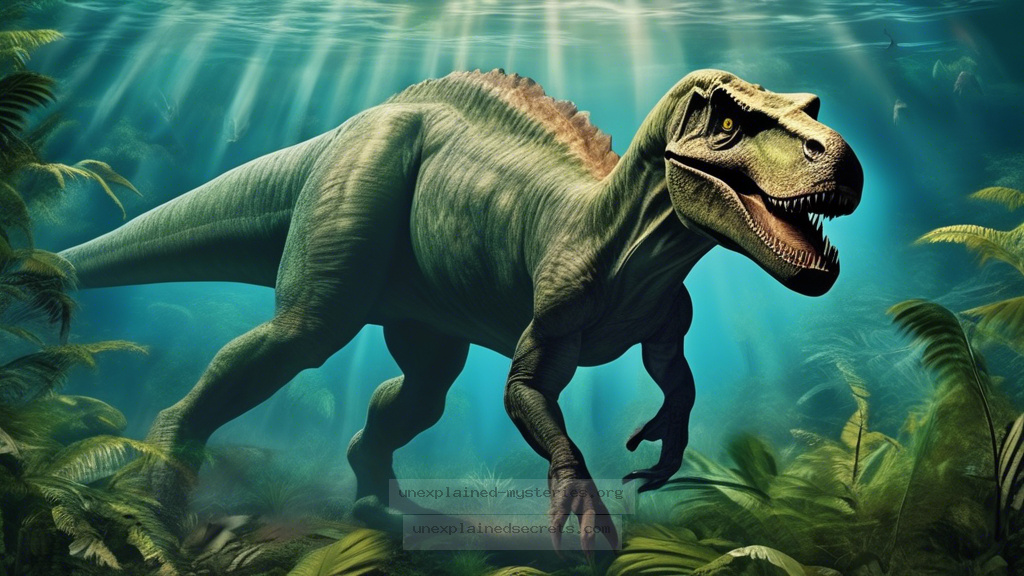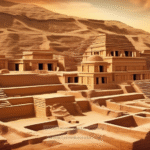Is the Mokele-Mbembe the Last Living Dinosaur Hiding in the Congo?
Is the Mokele-Mbembe the Last Living Dinosaur Hiding in the Congo?
The world is teeming with mysteries, and few are as intriguing as the legend of the Mokele-Mbembe, a creature said to inhabit the Congo River Basin. Is this elusive beast a remnant of a bygone era, possibly a living dinosaur that has evaded human discovery? This question matters because it challenges our understanding of biodiversity and the limits of human knowledge. The Mokele-Mbembe has captured the imagination of explorers, scientists, and cryptozoologists alike, leading to expeditions that blend myth and reality. In this post, we will delve into the history, theories, and ongoing investigations surrounding this cryptid, exploring whether it could indeed be the last living dinosaur on Earth.
Historical Context of the Mokele-Mbembe
The legend of the Mokele-Mbembe originates from the local folklore of the Bakuba and other ethnic groups in the Congo region. Translated as “one who stops the flow of rivers,” the creature is often described as having a large, long neck and a massive body, similar to a sauropod dinosaur. Sightings date back to the late 19th century when European explorers such as Pierre Savorgnan de Brazza began documenting local tales of strange animals in the region.
By the mid-20th century, the Mokele-Mbembe was popularized in Western culture through various books and documentaries. Notably, in 1981, cryptozoologist Roy P. Mackal led an expedition to the Congo to search for this elusive creature, further entrenching its status in the annals of cryptozoological lore. Despite extensive searches, no definitive evidence has emerged, fueling ongoing debates about the creature’s existence.
Core Concepts and Theories Surrounding the Mokele-Mbembe
The Mokele-Mbembe is often theorized to be a living dinosaur, specifically resembling the long-necked sauropods such as Brachiosaurus or Apatosaurus. These theories arise from the descriptions provided by local witnesses who report encounters with a massive creature resembling a prehistoric reptile. Some scientists posit that the creature could be a surviving member of the dinosaur lineage that went extinct 65 million years ago, suggesting that isolated populations might still exist in uncharted territories.
However, skeptics argue that the descriptions of the Mokele-Mbembe may be exaggerated or misidentified animals, such as hippos or crocodiles, which are native to the region. The vast and largely unexplored expanse of the Congo River Basin presents both the possibility of undiscovered species and the challenge of verifying claims. The creature’s potential existence raises questions about the limits of scientific exploration and the nature of evidence in cryptozoology.
Evidence and Practical Implications
While anecdotal accounts and local folklore provide some basis for the existence of the Mokele-Mbembe, scientific evidence remains elusive. Various expeditions have attempted to gather physical evidence, such as hair samples, footprints, or even photographic proof, but success has been limited. In recent years, technological advancements, including drone surveillance and environmental DNA (eDNA) sampling, have opened new avenues for investigation.
💡 Fact: eDNA analysis involves collecting samples from the environment (like water or soil) to detect genetic material from organisms, potentially providing evidence for the Mokele-Mbembe’s existence.
Despite these advancements, the dense jungles and challenging terrain of the Congo pose significant obstacles to researchers. The lack of accessible infrastructure and the potential danger posed by wildlife and local conditions complicate scientific inquiries. Moreover, the cultural significance of the Mokele-Mbembe to the local communities often leads to a reluctance to divulge information, further obscuring the truth.
Alternative Perspectives on the Creature
While the Mokele-Mbembe is often viewed through the lens of cryptozoology, some experts advocate for a more cautious approach. They suggest that rather than viewing it strictly as a living dinosaur, it may represent an undiscovered species that exhibits unique characteristics. This perspective shifts the focus from simply “proving” the existence of a dinosaur to understanding the biodiversity of the region and the importance of conservation efforts.
Additionally, some researchers argue that the Mokele-Mbembe could be a cultural phenomenon rather than a biological entity. Similar myths exist worldwide, often serving as allegories or cautionary tales. This viewpoint encourages exploration into the psychological and sociocultural factors that contribute to the persistence of such legends.
Common Misconceptions About the Mokele-Mbembe
There are several misconceptions surrounding the Mokele-Mbembe that often cloud discussions about its existence. One common belief is that the creature is universally accepted as real among local populations. In reality, opinions vary, and many locals view the Mokele-Mbembe as a myth or symbol rather than a physical being.
Another misconception is that all reported sightings can be directly correlated to the Mokele-Mbembe. Many alleged encounters could easily be attributed to misidentifications of known animals or exaggerated stories. The allure of the Mokele-Mbembe often leads to sensationalized accounts, which can detract from legitimate research efforts.
⚠️ Warning: Approach claims about the Mokele-Mbembe critically, as sensationalism can obscure scientific inquiry and the pursuit of truth.
Best Practices for Investigating Cryptids
For researchers and enthusiasts interested in investigating cryptids like the Mokele-Mbembe, certain best practices can enhance credibility and effectiveness. Firstly, it is paramount to conduct thorough field research, including interviews with local communities to gather firsthand accounts. Building relationships with local guides can also provide invaluable insights into the region’s ecology and folklore.
Secondly, employing scientific methods, such as eDNA sampling and wildlife tracking, can lend legitimacy to claims and contribute to biodiversity studies. An interdisciplinary approach, incorporating anthropology, ecology, and biology, can yield a more comprehensive understanding of the phenomenon.
Lastly, maintaining an open mind while adhering to scientific rigor is crucial. While the search for cryptids can be driven by passion and curiosity, it must also respect the complexities of nature and local beliefs.
Future Developments and Ongoing Research
The search for the Mokele-Mbembe continues to inspire researchers, cryptozoologists, and adventurers. Ongoing efforts focus on utilizing technology to explore the remote areas of the Congo Basin. Studies utilizing satellite imagery, drones, and acoustic monitoring may provide new avenues for discovering unknown species.
Furthermore, collaborative projects between scientists and local communities can enhance conservation efforts, ensuring that the delicate ecosystems of the Congo are preserved regardless of the Mokele-Mbembe’s existence. Engaging with local knowledge and integrating traditional ecological wisdom into modern science can lead to a more holistic understanding of the environment.
✅ Notable Development: Recent collaborations between environmental NGOs and local tribes aim to document biodiversity while respecting cultural narratives, potentially shedding light on the Mokele-Mbembe mystery.
Conclusion: The Mokele-Mbembe’s Place in Cryptozoology
The question of whether the Mokele-Mbembe is a living dinosaur hiding in the Congo remains unanswered, yet it serves as a powerful symbol of the unknown. As we continue to explore the mysteries of our planet, the legend of the Mokele-Mbembe reminds us of the importance of both scientific inquiry and cultural respect. While skeptics may argue against its existence, the allure of discovering a living relic from the past captivates the imagination and encourages ongoing research.
Whether or not the Mokele-Mbembe exists, its legend fuels curiosity and inspires adventures into the unexplored corners of our world. By embracing both traditional knowledge and modern science, we may one day uncover not only the truth behind the Mokele-Mbembe but also the richness of the biodiversity that surrounds us.
Other Articles
Recent Posts
- What Happened to Flight MH370? The Conspiracy Theories That Still Haunt Us
- What Secrets Lurk Within the Walls of the Infamous Trans-Allegheny Lunatic Asylum?
- What Evidence Supports the Existence of Bigfoot in the Pacific Northwest?
- What Happened to the Indus Valley Civilization? Unraveling the Mysteries of Ancient Urban Life
- Can Telepathy Be Scientifically Proven Through Laboratory Evidence?







